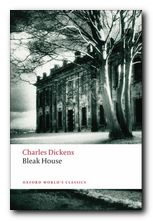sample from HTML program and PDF book
1. What follow are the assessment criteria used by a humanities department in a typical UK university.
2. Most institutions use similar criteria, but not all of them take the trouble to make them explicit to students. [However, this is beginning to change because of political pressure.]
First Class (70+%)
A first class answer has a thoughtful structure, a clear message displaying personal reflection informed by direct use of primary source material and/or wide reading of scholarly literature, and a good grasp of detail (as evidenced by the choice of relevant examples which are well integrated into the answer’s structure). Complete with no errors or omissions. Professionally presented including scholarly apparatus.
First class answers are ones that are exceptionally good for an undergraduate and which excel in at least one and probably several of the following criteria:
- comprehensiveness and accuracy
- clarity of argument or expression
- integration of a range of materials
- close analysis of texts
- insight into theoretical issues
- relates topic to wider field of knowledge
Excellence in one or more of these areas should be in addition to the qualities expected of an upper second class answer. Although there is no expectation of originality of exposition or treatment, a first class answer is generally expected to spot points rarely seen. A high first (75+%) is expected to display originality and excel in most if not all the aforementioned criteria.
Upper Second Class (60-69%)
An upper second class answer generally shows a sound understanding of both the basic principles and relevant details of the topic supported by examples which are demonstrably well understood and which are presented in a coherent and logical fashion. The answer should be well presented, display some analytical ability and contain no major error or serious omissions. Not necessarily excellent in any area. Professionally presented including scholarly apparatus.
Upper second class answers cover a wider band of students. Such answers are clearly highly competent and typically possess the following qualities:
- generally accurate and well-informed
- reasonably comprehensive
- well organised and structured
- provides evidence of general reading
- shows a sound grasp of basic principles
- shows understanding of relevant details
- succinctly and cogently presented
- displays some evidence of insight
One essential aspect of an upper second class answer is that it must have competently dealt with the question set. It should also demonstrate an ability to evaluate the secondary sources used in writing the essay and should, where appropriate, offer evidence of an ability to observe closely and evaluate material evidence.
Lower Second Class (50-59%)
A substantially correct answer which shows an understanding of the basic principles. Lower second class answers display an acceptable level of competence, as indicated by the following qualities:
- generally accurate
- adequate answer to the question
- work based on secondary sources and class notes
- clearly presented
- no real development of arguments
- may contain errors or omissions
A lower second class answer may also be a good answer (that is, an upper second class answer) to a related question, but not the one set by the examiner.
Third Class (40-49%)
A basic understanding of the main issues, but not coherently or correctly presented. Third class answers demonstrate some knowledge or understanding of the general issue, but a third class answer tends to be weak in the following ways:
- descriptive only
- does not directly answer the question
- misses key points
- contains important inaccuracies
- covers material sparsely
- assertions not supported by evidence
- poorly presented
Below Third Class
A pass presents the minimum acceptable standard at the bottom of the third class category. There is just sufficient information to indicate that the student has a general familiarity with the subject. Such answers typically:
- contain little material
- lack accuracy or depth of argument
- adopt a cursory approach
- are poorly written and presented
© Roy Johnson 2003
Buy Writing Essays — eBook in PDF format
Buy Writing Essays 3.0 — eBook in HTML format
More on writing essays
More on How-To
More on writing skills
 3. This can mean anything from a work’s particular vocabulary, sentence construction, and imagery, to the themes that are being dealt with, the way in which the story is being told, and the view of the world that it offers. It involves almost everything from the smallest linguistic items to the largest issues of literary understanding and judgement.
3. This can mean anything from a work’s particular vocabulary, sentence construction, and imagery, to the themes that are being dealt with, the way in which the story is being told, and the view of the world that it offers. It involves almost everything from the smallest linguistic items to the largest issues of literary understanding and judgement. Studying Fiction
Studying Fiction